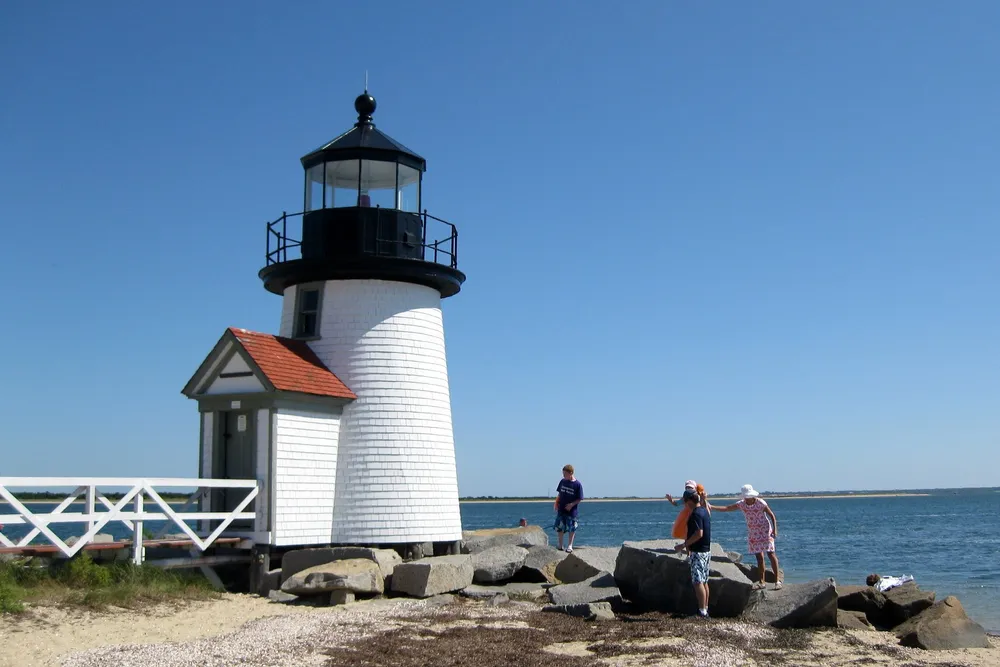US 'forever first' offshore wind array in hot water over communication failures, critics claim
Massachusetts’ Nantucket claims that Vineyard Wind is violating its pledge to provide timely updates especially about emergencies

The US flagship offshore wind array Vineyard Wind 1 is failing to fulfill promises it made to Nantucket in its Community Benefits Agreement (CBA) around transparency and communications that is undermining trust, town leaders asserted.
The 800MW project owned by Iberdrola’s US subsidiary Avangrid and Copenhagen Infrastructure Partners (CIP) is the nation's first to be fully permitted.
It has been under construction at its lease site some 15 miles (24 km) off the coast of Nantucket since 2023, with expectations of completion by year’s end.
Construction was derailed last summer when a blade on a GE Vernova turbine collapsed, spewing fiberglass debris that ultimately washed up on Nantucket beaches, interfering with the critical tourist season and local fisheries.
“Nantucket wasn't notified, or was notified without true transparency, for three days, until debris started floating up on our beaches,” said Brooke Mohr, a member of the town’s governing Select Board, at a Tuesday press conference.
In response, she said Vineyard CEO Klaus Møeller “promised it would not happen again.”
Yet, when the same turbine was later struck by lightning, “Vineyard Wind again sat on that information until the town heard it from community members,” she asserted.
“By refusing to timely and fully communicate critical details about their massive industrial project just off our coast, they've kept Nantucket and its residents in the dark, which endangers the public and undermines trust,” Mohr added.
Industry silence
Much of Trump’s criticisms are based on misinformation around the industry’s impacts on coastal environments, fisheries, and tourism.
“Since the last presidential election, Vineyard Wind’s leadership has essentially gone into hiding,” claimed Mohr.
“We believe that they are concerned about the change in policy at the federal level, and drawing scrutiny from the new administration,” she said. “However, hiding is not the solution to their problems."
Chris Moyer, head of political consultancy Echo Communications, said that based on recent polling that finds waning support for offshore wind, the strategy of avoiding public communications has failed, with existential risk for the industry.
“Choosing to stay silent is choosing to forfeit. That’s letting opponents define the narrative,” he said in a memo. “If the industry loses public support, members of Congress and other elected officials will follow,” he added.
Hotbed of opposition
With the vast Massachusetts wind energy area (WEA) off its coastline, Nantucket is already a hotbed of sector opposition.
Nantucket Residents for Whales (AckforWhales) remains a committed industry foe and took its lawsuit against Vineyard Wind all the way to the Supreme Court – which declined to hear it.
As Trump’s Inauguration Day anti-wind memorandum puts even existing and potentially in-construction projects under review with a goal of termination or modification, the group has renewed its attack on Vineyard by appealing directly to the President. It is also driving litigation against neighbouring SouthCoast, owned by Ocean Winds, and Orsted’s Revolution.
Nantucket is demanding the developer restore transparency in its communications while also partnering on an emergency response plan in the event of further mishaps like the blade collapse.
Light pollution
A particular source of complaint are the air traffic warning lights that now “pollute” Nantucket’s night sky.
“For years now, the night sky horizon, as viewed from Nantucket to the ocean, has been polluted with dozens of constantly blinking red lights from Vineyard Wind’s project,” said Greg Werkheiser, a lawyer with Culture Heritage Partners that is representing the town. The law firm is also involved in several suits against the industry.
In the CBA, Vineyard is obligated to install an aircraft detection lighting system (ADLS) that only lights up when an aircraft or ship is detected in the vicinity, reducing lighting to only around 4 hours per day.
Yet, despite having at least 17 turbines sending power to the grid and over 20 fully installed, the developer has not yet fulfilled this mandate, and its explanations for why not “have been convoluted, inconsistent and unsatisfactory,” said Werkheiser.
This “is not the leadership that was anticipated,” said Werkheiser.
To force Vineyard back to meet its obligations, Nantucket is threatening fines and legal action.
(Copyright)